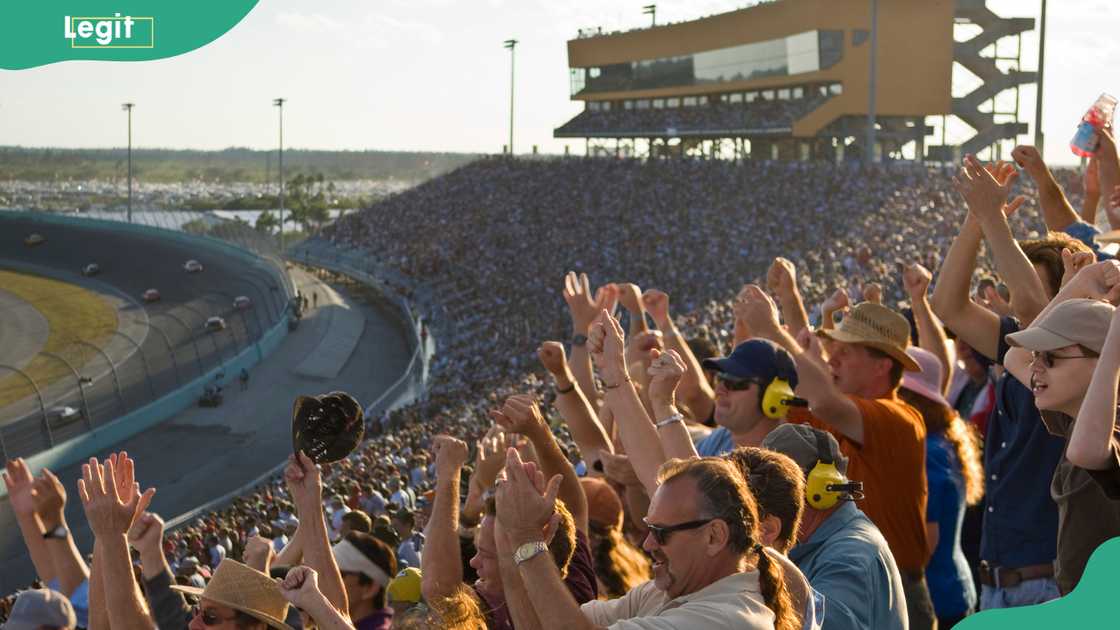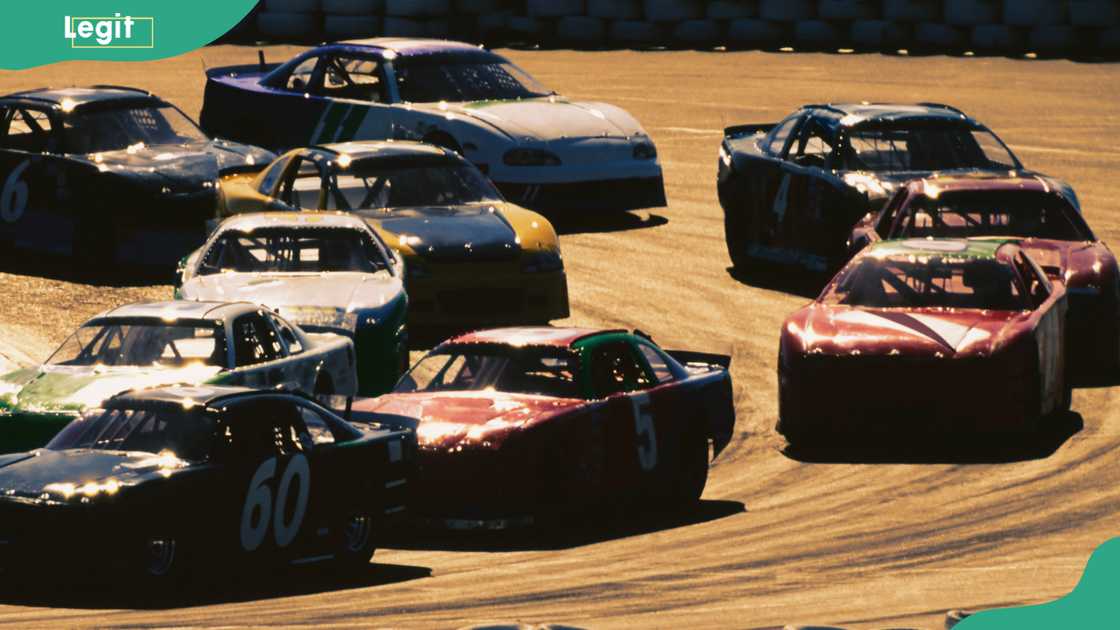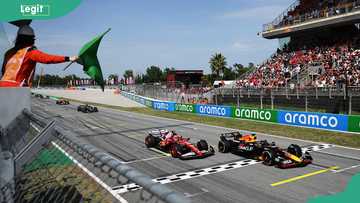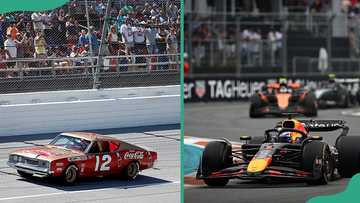How long is a NASCAR race? Breaking down race duration and distance
Most NASCAR races last between 2.5 and 4 hours, covering distances from 300 to 600 miles. The exact duration depends on the track type, race length, and various unpredictable race-day factors. During that time, drivers navigate a thrilling mix of speed, strategy, and split-second decisions. This guide breaks down how long a NASCAR race typically lasts and the distances involved

Source: Getty Images
TABLE OF CONTENTS
Key takeaways
- NASCAR race lengths vary, but most Cup Series events cover between 300 and 500 miles and typically last 3 to 5 hours.
- Short tracks tend to have more interruptions, while superspeedways often allow for quicker, more consistent pacing.
- Races in the Truck Series are generally shorter in both distance and duration, often lasting between 1.5 and 2.5 hours.
- Factors such as track type, caution periods, red flags, weather delays, and overtime finishes can all affect the duration of a race.
How long is a NASCAR race?
A standard NASCAR Cup Series race typically runs between 2.5 and 4 hours, depending on factors like track length, total distance, caution periods, and weather conditions. Below is a look at common race distances and durations.
Race distance

Source: Getty Images
NASCAR races are usually set by distance, not time. Typical race distances include:
Race type | Distance | Laps | Track example |
Standard Cup race | 400–500 miles | 200–267 | Daytona, Charlotte |
Short track | 300–400 miles | 400–500+ | Bristol (0.533 mi), Martinsville (0.526 mi) |
Road courses | 200–250 miles | 80–100 | Watkins Glen, Circuit of the Americas |
Superspeedways | 500 miles (e.g. Daytona 500) | 188–200 | Talladega (2.66 mi), Daytona (2.5 mi) |
Race duration (Time)
Race duration normally ranges from 2.5 to 4 hours, depending on the track type and race conditions. Here is a general breakdown of typical race durations by type.
Type of race | Duration |
Short tracks | 2 to 3 hours |
Intermediate tracks (1.5 miles) | 3 to 3.5 hours |
Superspeedways | 3.5 to 4+ hours |
Road courses | Around 2.5 to 3 hours |
Factors that affect how long a NASCAR race takes
The actual time it takes to complete a race can vary widely depending on several key factors. These include:
Track layout and length
Track type and size greatly influence race duration. Short tracks like Bristol or Martinsville are normally under 1 mile long. They require more laps to cover the race distance, and while the laps are quick, tight racing often leads to more cautions and slows the overall pace.
Road courses like Watkins Glen feature sharp turns and elevation changes. The lower speeds required for navigating these tracks often make the races longer, even though the overall distance may be shorter.
Caution periods
Caution periods (yellow flags) signal on-track issues such as crashes or debris, requiring the racing drivers to slow down and follow the pace car. These laps count toward the race total but extend the overall time, especially with multiple cautions.
Weather delays

Source: Getty Images
Unlike some sports, NASCAR does not race in heavy rain on oval tracks, though road courses may continue using rain tires. Races are often delayed due to rain or nearby lightning, which can add hours to the event. This is especially common in the summer, when sudden storms are frequent.
Red flags
A red flag stops the race completely, and the cars are parked with engines off. It's used for major wrecks or hazards that require extensive cleanup. Unlike cautions, no laps are counted during this pause, and delays can last from a few minutes to over an hour.
Overtime finishes (green-white-checkered)
To avoid finishing under caution, NASCAR may extend a race with a green-white-checkered restart. If a caution occurs before the white flag (final lap), the restart is retried, up to a set limit, adding extra laps, time, and unexpected twists.
How long is a 400-lap NASCAR race?
A 400-lap NASCAR race can vary in both distance and duration, depending on the length of the track. Since NASCAR tracks differ in size, 400 laps don’t always equal the same number of miles. Two common examples include:
Richmond Raceway
A 400-lap race at Richmond Raceway covers 300 miles, with each lap being 0.75 miles. As a short track, it's slower speeds and frequent cautions usually make the race last between 2.5 and 3 hours.
Dover Motor Speedway
At Dover Motor Speedway, a 400-lap race covers 400 miles. The high banking and concrete surface allow for fast speeds but often lead to more pit stops and cautions, making the race last about 3 to 3.5 hours.
Is NASCAR 500 miles or laps?

Source: Getty Images
In NASCAR, race distances are usually expressed in miles rather than laps. For instance, the 500 in the Daytona 500 indicates the total race distance in miles.
How many laps is a NASCAR race?
The number of laps in a NASCAR race depends on the track length and the total race distance. For example, the Coca-Cola 600 at Charlotte Motor Speedway is a NASCAR Cup Series race that covers 600 miles, completed over 400 laps on the 1.5-mile track. The race is divided into four stages of 100 laps each.
Most NASCAR races run between 2.5 and 4 hours, but with high speeds, intense strategy, and unexpected cautions, no two races are ever the same. From tight short tracks to sweeping superspeedways, every event offers a unique thrill.
Legit.ng recently published an article on how fast NASCAR cars go compared to F1. F1 cars are generally faster than NASCAR cars in terms of outright top speed. This is because they can accelerate more quickly and achieve higher speeds in a straight line.
Average speed, acceleration, cornering, and track type are the factors that contribute to high speed in NASCAR and F1 vehicles. Normally, NASCAR cars have a restrictor that slows them down and limits their speed to 200 mph. Find out more about the speed comparison of the two in the post.
Proofreading by Kola Muhammed, copy editor at Legit.ng.
Source: Legit.ng







